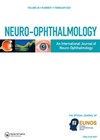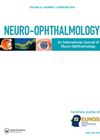
Journal Reviews
Amyotrophic lateral sclerosis (ALS): what happens to eye movements?
Amyotrophic lateral sclerosis (ALS) is a neurodegenerative disorder of upper motor neurons of the corticospinal tract and lower motor neurons in brainstem nuclei and the anterior horn of the spinal cord. Limited literature is available on abnormal ocular movements in...
Hemianopia or visuospatial neglect: differences in information processing
It is widely reported that visuospatial neglect and hemianopia may be superimposed, and disentangling the two conditions can be pose difficulties for clinicians. The authors of this paper explored the differences in implicit information processing which is effective in patients...
Automated Bruckner device accuracy
The authors developed a Bruckner device, examined volunteers and determined the relation between the luminance of the red fundus reflex and eye rotation. Eye rotation was varied continuously both horizontally (-7 to 8 degrees) and vertically (five degree total range)...
Identification and diagnosis of thalamic haemorrhage
This paper presents a case of thalamic haemorrhage and discusses clinical findings, providing valuable insight into signs clinicians need to look for. The case presented is of a 76-year-old female who developed left hemiplegia and hemi anaesthesia. Ocular motility testing...








